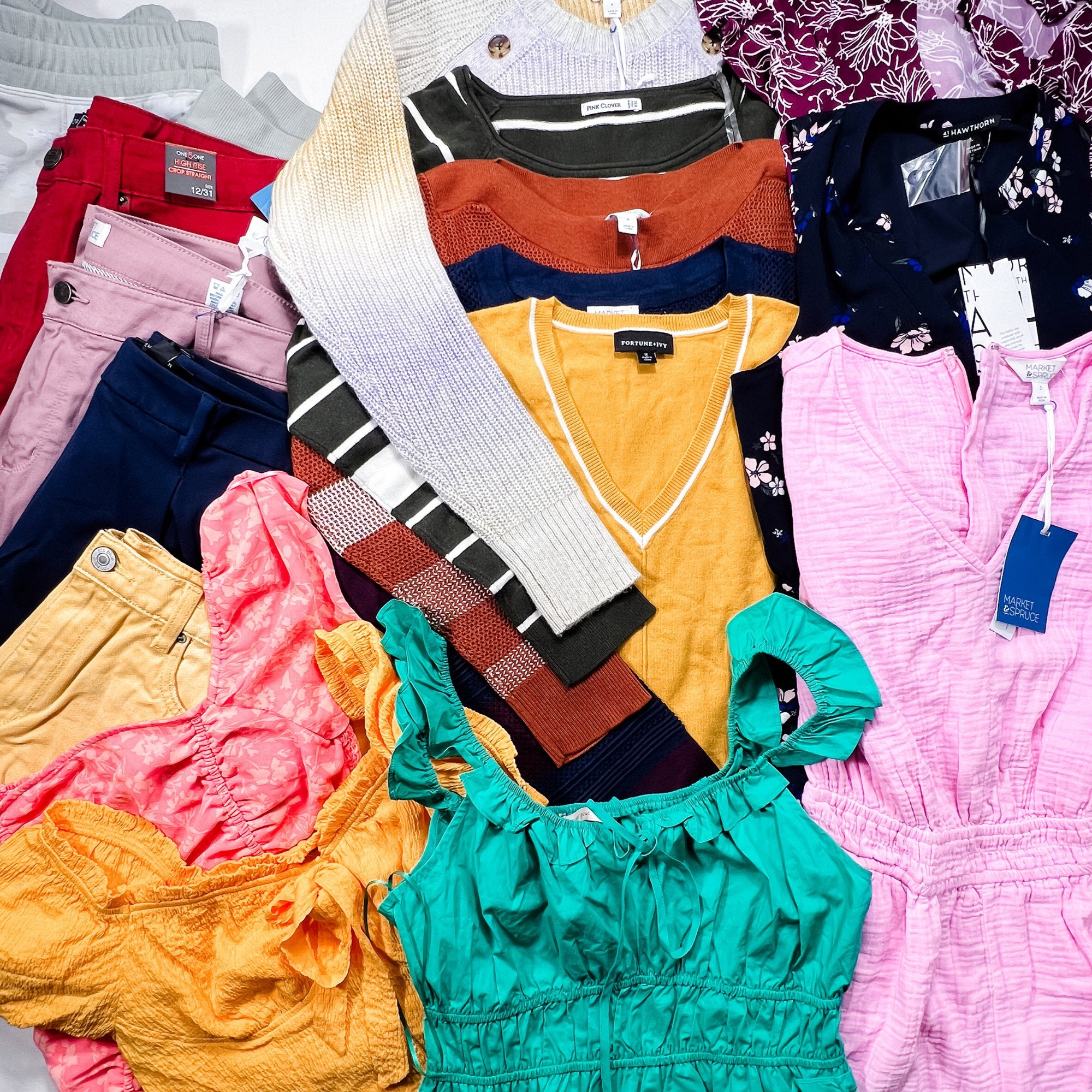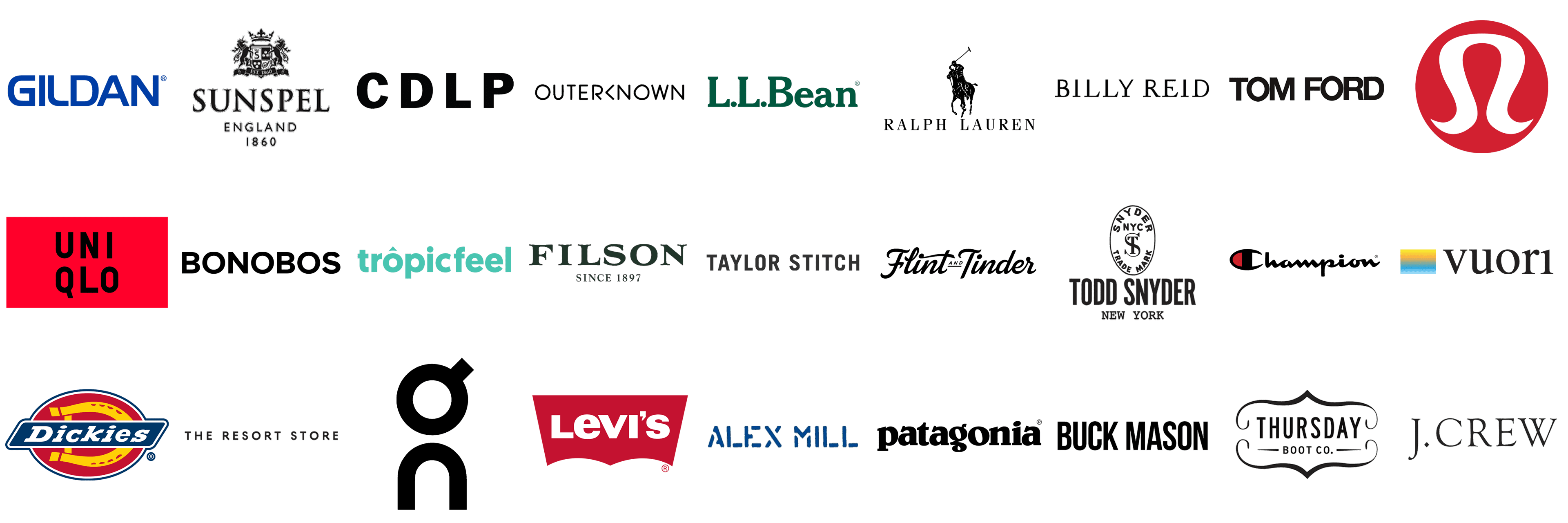Common Fabric Types Used in Branded Clothing and What They Mean
Common Fabric Types Used in Branded Clothing and What They Mean
Blog Article
The Value of Lasting Garments: How It Impacts the Environment and Your Closet
Sustainable clothes is increasingly identified for its essential role in minimizing the environmental influence of the fast fashion market. By concentrating on green materials and moral manufacturing methods, it attends to pushing environmental problems. This shift not only benefits the planet yet also affects consumer selections, resulting in an extra thoughtful method to wardrobe administration. Understanding these characteristics increases vital questions regarding fashion's future and personal duty in shaping it.
The Ecological Impact of Rapid Fashion

Advantages of Lasting Materials
Sustainable materials supply considerable advantages, especially with environmentally friendly fabric choices that minimize ecological harm. These products also demonstrate resilience and longevity, lowering the demand for regular replacements. Consequently, they add to a much more lasting fashion market and advertise accountable consumer actions.
Eco-Friendly Material Options
While the fashion business has long been related to fast fads and environmental damage, the rise of environment-friendly fabric options presents a transformative possibility. Sustainable products such as organic cotton, hemp, and Tencel have actually obtained appeal because of their reduced eco-friendly impact. These materials are commonly created without unsafe pesticides and require less water, lowering their carbon impact - Branded Clothing. In addition, many green materials are naturally degradable, contributing to a circular economic situation by reducing waste. Selecting sustainable materials not only sustains eco accountable practices but likewise promotes healthier ecosystems. As consumers become much more familiar with their purchasing power, the need for eco-friendly materials encourages brands to introduce and take on more sustainable manufacturing approaches, eventually benefiting the earth and future generations
Sturdiness and Durability Benefits
Lots of customers are progressively identifying the sturdiness and longevity advantages of sustainable products in their apparel options. Unlike standard materials, sustainable products such as natural cotton, hemp, and recycled polyester are crafted to endure deterioration, leading to garments that last longer. This decreased regularity of substitute not only conserves customers money over time however additionally diminishes waste created by fast fashion. Additionally, lasting clothes commonly uses eco-friendly manufacturing techniques that enhance textile stamina, adding to a decrease in the total carbon footprint. By purchasing sturdy apparel, consumers can cultivate a much more sustainable closet while delighting in high-grade items that keep their visual and performance gradually. Consequently, resilience and durability stand as vital advantages of picking lasting products.
Reducing Waste Via Sustainable Practices
Reducing waste in the garment industry can be accomplished through innovative techniques such as upcycling and repurposing products. Furthermore, taking on minimalist closet approaches encourages customers to prioritize top quality over quantity, eventually lowering clothes usage. Together, these methods add significantly to an extra sustainable clothing design.
Upcycling and Repurposing Products
Upcycling and repurposing materials have become innovative techniques in the fashion sector, transforming thrown out textiles right into valuable new products. This approach not just reduces waste however likewise urges creativity and uniqueness in clothes style. By taking old garments and products, designers can develop one-of-a-kind pieces that show personal style while decreasing the need for new resources. Additionally, upcycling often requires less power and water contrasted to traditional manufacturing processes, substantially reducing the environmental impact of fashion. As consumers end up being more aware of sustainability, the popularity of upcycled apparel remains to increase, promoting a round economic situation. Ultimately, these techniques add to a more lasting future, where style prioritizes ecological wellness over fast manufacturing and intake.

Minimalist Closet Methods
As people increasingly look for to minimize their environmental influence, embracing minimalist wardrobe techniques has actually obtained traction as an effective method to lasting style. These approaches highlight top quality over quantity, motivating customers to curate a smaller sized collection of functional, long lasting garments. By concentrating on ageless pieces that can be blended and matched, people can minimize the frequency of acquisitions and eventually lower waste.Additionally, minimalism advertises conscious consumption, advising customers to review the environmental and moral effects of their options. This strategy not only fosters an extra lasting way of life yet also streamlines everyday decision-making regarding clothes. As people embrace minimalist principles, they add to a fashion society that values sustainability and accountable consumerism, ultimately leading to a more eco-conscious society.
The Duty of Moral Labor in Sustainable Style
While several customers are significantly familiar with the ecological consequences of their clothes choices, the relevance of honest labor practices in sustainable fashion can not be ignored. Ethical labor encompasses fair wages, safe working conditions, and regard for employees' civil liberties, creating the backbone of responsible fashion production. Brands that prioritize ethical labor not only boost neighborhoods however likewise established a standard for responsibility in pop over to this web-site the industry.Moreover, the integration of honest practices promotes transparency, allowing consumers to make enlightened options concerning their purchases. This technique contrasts dramatically with rapid fashion's exploitative labor versions, which commonly focus on earnings over people. By sustaining companies committed to moral labor, customers add to a system that values human dignity together with environmental sustainability. Subsequently, honest labor is not simply an add-on; it is vital to the broader mission of sustainable style, making sure that the quest for eco-friendliness does not come with the expenditure of human civil liberties.
The Impact of Sustainable Garments on Carbon Emissions
Sustainable apparel has the possible to considerably decrease carbon emissions linked with the fashion business. Conventional garment manufacturing contributes especially to greenhouse gas emissions, mostly because of energy-intensive manufacturing processes and using non-renewable sources. In contrast, sustainable fashion concentrates on environment-friendly products, such as organic cotton or recycled fibers, which frequently call for much less power to produce.Moreover, lasting brands often tend to adopt much more effective manufacturing practices, reducing waste and lowering overall emissions. By focusing on toughness and classic layout, sustainable clothing urges consumers to acquire less frequently, more reducing the carbon footprint related to overconsumption.Additionally, lots of lasting brand names are committed to openness in their supply chains, making it click resources possible for customers to make informed options that line up with their values. Eventually, moving in the direction of sustainable garments can result in a significant reduction in carbon discharges, adding to a much healthier planet and an extra lasting future for the apparel industry.
Sustaining Neighborhood Economic Climates With Lasting Options
The shift toward sustainable apparel not just addresses ecological worries but likewise substantially benefits neighborhood economic situations. By picking sustainable style, consumers typically sustain small companies and neighborhood craftsmens, boosting area durability. These enterprises generally operate a smaller sized range, focusing on craftsmanship and honest practices over mass production.Investing in locally made sustainable clothing promotes job production and stimulates financial development within areas. As consumers end up being more knowledgeable about the environmental effect of their acquisitions, they significantly look for out items that show their values. This need motivates local makers to adopt sustainable techniques, adding to a circular economy.Moreover, supporting local companies lowers transport discharges, aligning with eco-conscious customer habits. The interconnectedness of sustainable clothing and local economic situations emphasizes the vital duty that individual options play in promoting both economic and environmental health and wellness. By fostering these neighborhood connections, neighborhoods can flourish while likewise functioning in the direction of a much more sustainable future.
Transforming Your Storage Room: Tips for a Lasting Wardrobe
As individuals look for to reduce their environmental impact, changing a closet right into a sustainable closet comes to be Bonuses a necessary step. One reliable technique is to evaluate existing apparel, keeping just things that are put on regularly and that straighten with sustainability goals. Focusing on high quality over quantity is important; spending in durable items from environmentally friendly brands can considerably decrease waste.Additionally, integrating pre-owned products can revive a wardrobe while decreasing ecological damage. Organizing garments swaps with close friends or giving away unused items can further promote sustainability.When purchasing, individuals ought to look for products that are organic, recycled, or naturally degradable, and prevent rapid style stores - Branded Clothing. Exercising conscious intake by thoughtfully thinking about each acquisition can contribute to an extra sustainable lifestyle. By implementing these suggestions, one can create a wardrobe that shows personal design while supporting ecological stewardship
Often Asked Concerns
Just How Can I Determine Lasting Garments Brands?
To recognize lasting clothes brands, one should investigate materials utilized, look for certifications like Fair Profession, and take a look at the brand's openness concerning their production procedures, labor practices, and ecological influence, guaranteeing honest and environment-friendly methods are focused on.
What Are the Expenses Connected With Sustainable Style?
The expenses related to lasting style can vary substantially. Higher manufacturing expenses, ethical sourcing, and environmentally friendly products frequently cause increased market prices, which might prevent some customers while interesting eco conscious buyers.
Can Sustainable Clothes Be Fashionable and Stylish?
Lasting clothing can certainly be trendy and trendy. Designers increasingly focus on innovative products and honest production techniques, verifying that fashion and sustainability can coexist. Customers now have varied alternatives that blend looks with ecological consciousness.
Just How Does Washing Garments Affect Their Sustainability?
Cleaning clothing greatly effects sustainability by consuming water and power, adding to contamination, and creating microplastic release. Constant washing can deteriorate textiles, shortening their life expectancy and boosting the demand for replacements, eventually aggravating ecological issues.
What Is the Life-span of Lasting Clothing Compared to Quick Style?
The lifespan of sustainable clothes typically goes beyond that of quick style products, usually long lasting a number of years because of high quality materials and craftsmanship. In comparison, rapid style garments may break down swiftly, demanding more constant replacements. Sustainable clothes is progressively recognized for its essential function in reducing the environmental effect of the quick fashion industry. While numerous customers are increasingly conscious of the environmental repercussions of their garments options, the importance of honest labor techniques in lasting style can not be ignored. Branded Clothing. Sustainable clothes has the prospective to considerably lower carbon exhausts associated with the style industry. In comparison, lasting fashion focuses on environmentally friendly products, such as natural cotton or recycled fibers, which often require less energy to produce.Moreover, sustainable brand names often tend to take on much more efficient production methods, lessening waste and lowering total emissions. By focusing on resilience and timeless layout, lasting apparel motivates customers to buy much less often, further decreasing the carbon footprint associated with overconsumption.Additionally, several lasting brand names are devoted to transparency in their supply chains, allowing customers to make enlightened options that straighten with their worths
Report this page